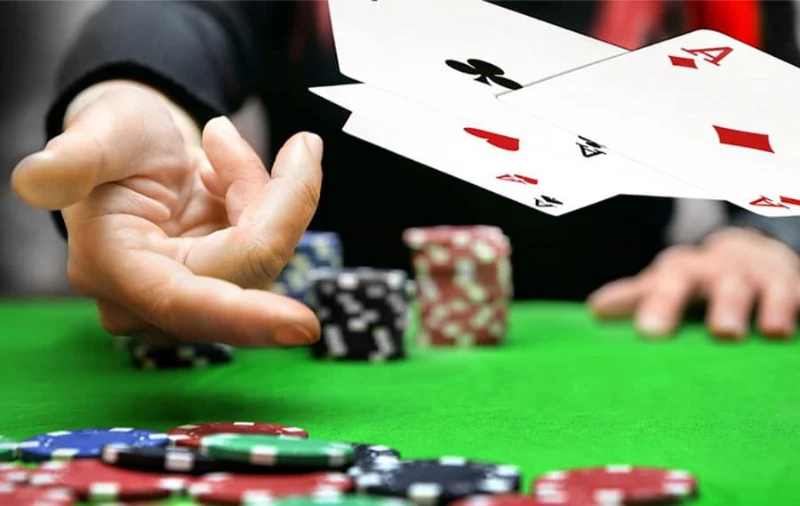Blackjack, also known as Blackjack, is a popular game involving a deck of Western cards. Even though the rules are simple, to win at Blackjack, you need to master indispensable experience! WK777 will reveal secrets on how to play blackjack in the article below.
Principles of How to Play Blackjack

In the Blackjack game, players use a deck of 52 cards. When the game starts, each player receives 2 cards and can then draw more as the game progresses. The main goal is to reach a total score close to or equal to 21. Players calculate the points from the value of the cards to ensure they reach this important milestone.
Dealing Cards When Playing Blackjack
Each Blackjack game follows its own rules for distributing cards and determining the number of players (ranging from 2 to 4 people). Players place their bets, and if they win, they receive a bonus amount higher than the bet amount. If they lose, they forfeit the entire bet to the house. To maintain the house’s position, players must have an amount of money no less than the total bets of all players. With the initial card distribution and additional draws, the confrontation between the player and the dealer becomes attractive and dramatic.
Instructions for Calculating Scores in How to Play Blackjack

When participating in a Blackjack game, players decide whether to draw more cards based on the total score of the first two cards they hold in their hand. The specific rules for calculating scores in Blackjack are as follows:
- Score from 2 to 10: The point value corresponds to the number on the card.
- J, Q, K: Each of these cards counts as ten points.
- Ace (A): This card has a flexible value and can be counted as 11, 10, or 1 point, depending on the situation.
- Total score: Calculate the total score of all cards in the hand again to get the final total score.
Detailed Instructions on How to Play Blackjack

Once you understand how to play Blackjack, you can easily calculate points at each stage and build your strategy. Your strategy might include deciding whether to draw more cards or stand, as well as managing bets. The game of Blackjack is divided into two specific stages as follows:
Stage 1: Total Score When Receiving Cards
In the first phase of Blackjack, players total the points from their initial two cards. If you have one of the following situations, you should stop and claim your winnings:
- First case: Two Aces (Xi Bang).
- Second case: One Ace and one card from the K, Q, J, or 10.
If the above situations happen to the dealer, the dealer wins the entire bet, unless a player has a total score equal to or higher than the dealer’s total score.
Stage 2: Process of Drawing More Cards
After calculating the points from the first two cards, the next stage is to draw more cards. You have the right to draw more after calculating the points from the first two cards. However, you can also decide to stop, ensuring the total score of the cards in hand is between 16 and 21 points. In Blackjack, the terms used are as follows:
- If the total score is less than 16, it is called “Non-Card.”
- The total score from 16 to 21 is called “Full Card.”
- If the total score is over 21, it is called “Quac (Too),” and you will not be allowed to draw more cards.
The order of play starts from the dealer’s right and moves clockwise. Each player can draw more cards until they decide to stop.
As a player, you must have a total score of 16 or more before the dealer checks the cards. If not, you lose and the house takes the bet. The dealer compares scores with all remaining players. The bookmaker pays the bet to the player if they have a higher total score. If the score is equal, both are considered a tie.
Strategy of How to Play Blackjack from the Masters

- Handling Total Score 16 – 17: Decide whether to keep the same or draw more to optimize your chances of winning.
- Draw Cards When Your Opponent Has 2 Cards: Draw cards to increase your chances of winning if your opponent only has 2 cards in hand.
- Observe Your Opponent with 3 – 4 Cards: Monitor your opponent’s play in previous games to predict whether they will continue to draw more cards.
- Facing Five Spirits or Quacks: If your opponent has drawn 5 cards, consider the possibility of them possessing five spirits or being beaten, and decide whether to continue playing or stop.
- Compare Cards with 18 – 21 Points: Decide to compare cards if the total score in your hand is between 18 – 21, and use the advantage of the score to achieve victory.
